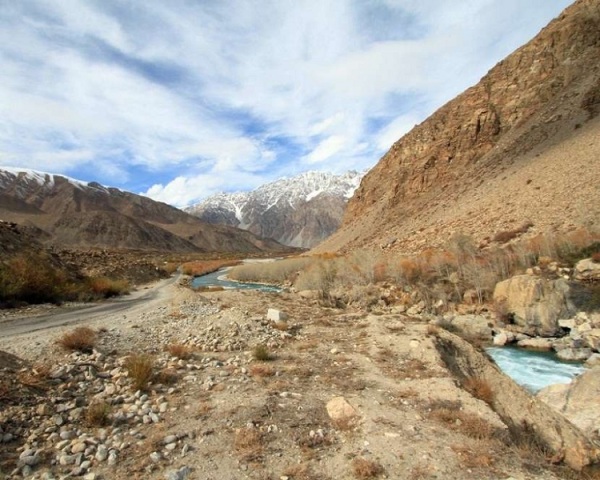Tajikistan is a mountainous country, which stands landlocked in Central Asia. In this article, we have provided some fun and interesting facts about Tajikistan.
Facts About Tajikistan
The Tajik people were initially under the rule of the Russians, until Russia’s hold on their country weakened in the Revolution of 1917. One of the smallest countries in central Asia, Tajikistan is also known as the ‘Republic of Tajikistan’, which gained its independence on September 9, 1991. Tajikistan is a landlocked country that forms a part of Central Asia. A mountainous country, it has ninety percent of its area precipitous and rocky. The country stands bordered by Afghanistan in the south, Uzbekistan in the west, Kyrgyzstan in the north, and China in the east. Forming its border with Afghanistan are Amu Darya and Panj rivers, while its mountains are the major source of surfeit for the Aral Sea. Majority of the population in Tajikistan is from the Tajik ethnic group and shares its culture and history with the Persians. In the following lines, we have provided more information on Tajikistan. Read on and explore the country further.

Image: leehughes1@flickr
Fast Facts
Continent: Asia
Area: 143,100 km2
Capital: Dushanbe
Population: 7,616,000
Official Languages: Tajik (Persian) and Russian
Independence Day: September 9, 1991
Type Of Government: Unitary semi-presidential republic
Fun & Interesting Facts About Tajikistan
-
The official name of Tajikistan is the ‘Republic of Tajikistan’.
-
The official language of Tajikistan is Tajik, though Dari, Russian and Uzbek are also spoken there.
-
Majority of the population in Tajikistan comprises of Sunni Muslims, followed by Shiite Muslims and Christians.
-
The largest ethnic group in Tajikistan comprises of Tajiks.
-
The currency of Tajikistan is Somoni.
-
The capital of Tajikistan is Dushanbe.
-
Tajikistan follows the system of Unitary Presidential Republic.
-
Tajikistan was initially a part of the Samanid Empire, but was created as an Autonomous Soviet Socialist Republic, within Uzbekistan, in 1924.
-
Tajikistan was separated from Uzbekistan in 1929 and became a Soviet Socialist Republic.
-
Tajikistan became an independent nation in 1991, after the dissolution of USSR.
-
Tajikistan suffered from a devastating civil war in the late 20th century, which lasted from 1992 to 1997.
-
The ancient city of Khodjand, located in Tajikistan, was an important location on the Silk Route Road.
-
Tajikistan established diplomatic ties with China in 1992, and since then, the two countries’ friendly-relations have helped each other’s economies grow.
-
The terms ‘Tajikistan’ literally means ‘Land of the Tajiks’.
-
‘Ismoili Somoni’ (7,495 m) forms the highest point in Tajikistan.
-
The Iskanderkul Lake of Tajikistan is named after Alexander the Great.
-
Fergana Valley is an area that is shared by Tajikistan, with Uzbekistan and Kyrgyzstan.
-
Sarazm, near Penjikent, is a settlement that was in existence in the Bronze Age.
-
The ‘Silk Road’, forming a major trade route between China and Europe, passed through Tajikistan.
-
Did you know Russian soldiers are reported to have seen the Abominable Snowman or the ‘Yeti’ in the Pamir Mountain ranges. The legend of the Yeti still exists in Tajikistan today.
-
Karabair and Lokai horses are reared in Tajikistan.
-
Tajikistan consists of 4 administrative divisions: provinces of Sughd and Khatlon, the autonomous province of Gorno-Badakhshan (GBAO) and the Region of Republican Subordination.
-
Tajikistan is amongst the smallest nations in Central Asia, in terms of area.
-
More than fifty percent of Tajikistan land is over 3,000 meters (approx. 10,000 ft.) above sea level.
-
Over ninety percent of the area in Tajikistan is mountainous.
-
Aluminum, zinc, lead, chemicals and fertilizers make up the major industries of Tajikistan.
-
More than 80% of the Tajik population is Sunni Muslims. 5% are Shi’a Muslims and the remaining 15% comprise of the other religions.
-
Lake Karakul is located in the Pamir Mountain Range and is 3915 meters above sea level.
-
Ismoili Somoni was a popular ruler of the Tajiks at the beginning of the 10th century. Today, one of the highest mountain points in Tajikistan is named after him.
See also
More from iloveindia.com
- Home Remedies | Ayurveda | Vastu | Yoga | Feng Shui | Tattoos | Fitness | Garden | Nutrition | Parenting | Bikes | Cars | Baby Care | Indian Weddings | Festivals | Party ideas | Horoscope 2015 | Pets | Finance | Figures of Speech | Hotels in India : Delhi | Hyderabad | Chennai | Mumbai | Kolkata | Bangalore | Ahmedabad | Jaipur
- Contact Us Careers Disclaimer Privacy Policy Advertise With Us Lifestyle Sitemap Copyright iloveindia.com. All Rights Reserved.







